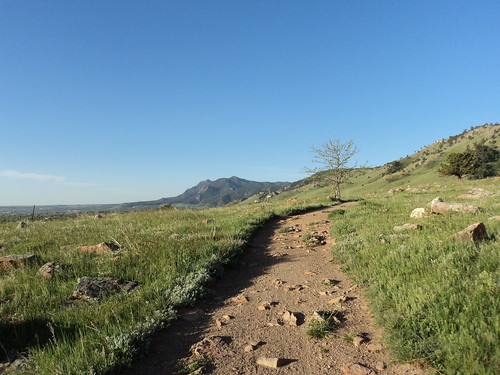Glee and determination are usually antagonistic emotions, yet the Tarahumara were brimming with both at once, as if running to the death made them feel more alive - from Born to Run
I recently finished reading McDougall's Born to Run: A Hidden Tribe, Super Athletes, and the Greatest Race The World Has Never Seen. I decided to read it after several people recommended it to me. Of course, I should mention that one of those people is currently preparing for the World Championship Iron Man in Hawaii and another had just finished sprinting up a 13,000 ft mountain wearing those weird barefoot shoes that are all the rage in Boulder these days. But, worthy of the book or not, I decided to give it a try.
I wasn't sure what to expect in a book about running. Turns out it's a page-turner adventure story that takes you from an ultra marathon in Leadville, Colorado to a crazy 50 mile trail race with the Tarahumara Indians in Mexico.
The author makes two main points:
The first point is that the whole running sneaker industry is a load of crap. McDougall heads to the Copper Canyon in Mexico to study the Tarahumara Indians, who run extraordinary distances in nothing but thin-soled sandals. When he comes home, he researches the shoe industry. A few facts, according to the book:
- Since Nike introduced what we all know as the modern running shoe in the 70s, Achilles complaints have increased by 10 percent, while plantar fasciitis has remained the same.
- According to a 2008 research paper for the British Journal of Sports Medicine, there are no evidence-based studies--not one--that demonstrate that running shoes make you less prone to injury.
- Runners wearing top-of-the-line shoes are 123 percent more likely to get injured than runners in cheap shoes.
Basically, the theory is that because of the heel cushioning in modern shoes (with the most cushioning found in the top-of-the-line shoes), we have changed the way that we run, and not for the better. Running in modern running shoes encourages you to land on your heel, rather than your forefoot, bringing all sorts of damage into the heel, knees, and other parts of the body.
(For another article, not mentioned in the book, but that I found interesting regarding the running shoe industry, click here)
It's a compelling argument, but I wasn't sure quite what to make of this point because when the author considers scrapping his own shoes to run barefoot, his coach tells him that his feet haven't been conditioned to run that way yet and that he'll end up with shin splints and who knows what other injuries. He ends up ordering some old Nikes online. But I keep seeing more and more of the "barefoot" running shoes around Boulder and am curious to see where that goes. For now, I'm sticking to my Mizuno Alchemy 8s, but I plan on doing a little more research before buying my next pair of shoes.

Tarahumara sneakers

The American version of running barefoot
The second point the author makes is that humans are designed to run and that the best runners have a true passion for running. I certainly don't have the passion of some of the people in the book--people who have shattered world records, run 100 miles in blistering heat, and who are always looking to push their running to the most extreme limits. However, reading about the joy and abandon with which the people in the book run made we want to put down the book and head out on the trails for myself.
Long before I discovered yoga or attended a church that integrates meditation into the service, I used running as a way to center myself. If I am trying to figure out a solution to a problem, my head is clearest when I'm out on a running trail. If I start feeling like I need a little space from the chatter of kids, I return from a run a much more patient mom. Lately, when I run, I write. Of course I don't drag the computer along with me, but I compose what I am going to write on the trail. For days I have been trying to think up a short story for my next writing group meeting and yesterday, on an hour and a half run, it all came together. I love that feeling.
While I'm not sure what to take from the book when it comes to barefoot running, when it comes to the author's descriptions of cultures with a passion for running, I simply enjoyed reading about the Tarahumara and the other ultra-marathoners in the book. I don't think you need to be an Iron Man or marathoner or even an occasional 5k racer to enjoy this book. As long as you are someone who occasionally finds yourself heading out for a jog, it's a book worth reading.

Noni's first race

A photo from my morning run in Boulder
4 comments:
Oh my goodness, I love that picture!
We'll be in CO in a month! Wanna go for a run?
I always ran to center myself, too ... until my knees gave out. I still haven't found any physical activity that can match a good run! I really miss it.
Enjoy!
xx meg
Very interesting, sounds like a book worth reading and I remember hearing the author interviewed on NPR. I'm really curious about how Americans raised in pricey running shoes fare in the--are they Vibrams?--barefoot shoes. I enjoy running for how quick it can be and for centering myself, but I'm pretty sure I did not evolve from a running culture :-) What are short bow legs good for? Horses?
i'm really curious about the barefoot shoes and if they really work. I'd love to get a pair if they're going to make running less painful
Post a Comment